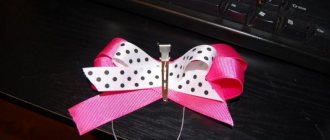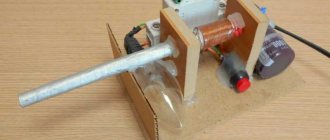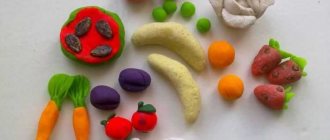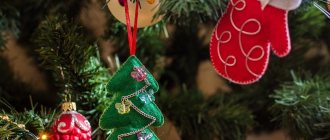Decorating your home for Halloween can be quite a task, and you may have to sacrifice the style of your favorite apartment for store-bought items. Chinese trinkets fill your space so unsightly and can overwhelm you with the abundance of black and orange colors.
This year, skip the store-bought souvenirs and make your own Halloween decorations. Not only is it fun, but you'll also save money!
So put aside the huge artificial white clouds of “spider” webs, hanging which you can hardly wash your hands later! We will teach you how to quickly and easily make a web from threads that are lying around your house. And if there are no threads, you can unravel an old sweater and sock.
How to make a web with your own hands from paper?
Making spider webs from paper is similar to cutting out snowflakes.
- A square sheet of paper needs to be folded in half diagonally, then in half again, again and again.
- Draw lines with a pencil and cut out (as in the photo). ...
- Straighten the web and put it under a press.
30 Sep.
2014 Interesting materials:
Why 600 Mercedes? Why was 6ix9ine imprisoned? Why is 86 32 bit? Why were A and Pushkin challenged to a duel? Why does iPhone 7 heat up quickly? Why does my iPhone turn off when it's cold? Why did the iPhone become bad at receiving Wi-Fi? Why did IQOS become bitter? Why is the battery not charging 100%? Why won't the battery charge from the charger?
Master class: web of threads
- Yarn (threads from any material, all kinds of colors)
- Scissors (ordinary stationery, for cutting or even manicure)
- Tape (use tape that won't damage your wallpaper and can be easily removed, such as masking tape)
Tools for thread web
Operating procedure:
- To start, cut 3-4 long strands (or more) and secure them to the wall with tape (or nail them to the wall). Place them so that they all intersect in the middle.
- Secure all the long pieces of thread in the middle with a small piece of yarn and tie them together. It is advisable to cut off unnecessary long ends.
Scheme and procedure for collecting webs from threads
- Then take a long piece of yarn and begin to gradually form a web. Tie one end of the yarn to one of the long pieces of thread and do the same with each of the long pieces.
How to properly fasten and “tie” knots on a web
- On each long strand, tie a large piece of thread to the strand (using a simple knot).
- Continue moving from one long strand to the next, twisting and tying, until you gradually reach the very first strand you started with.
Trim any excess yarn ends. Each knot should be sliding so that you can easily move it up or down the thread.
The easiest way to secure it to the wall is with masking tape.
Repeat this step, using increasingly longer pieces of thread to form increasingly larger rings on your web. You can make these rings at a very short distance from each other, or, conversely, further away - it all depends on your mood and aesthetic need.
Only when you have finished weaving all the rings on the web will your spider web be ready!
Select the size and shape of your future web in accordance with the features of your wall, the location of bookshelves or windows.
You can weave a web, combining a variety of colors and sizes - compact white or huge black.
To further lift your spirits, you can weave a web from some bright, juicy threads! Don't forget to add small faux spiders to enhance the spooky effect!
The evolutionary significance of webs for spiders
The web was crucial in the evolution of spiders.
As already noted, spiders use it all the time in one way or another. We can say that they interact with the outside world through their web-like devices. In this regard, spiders, adapting to new conditions, first of all changed their web adaptations, changing little themselves, which means they retained the general type of organization. Indeed, spiders, despite their great species diversity, maintain unity in their biology, type of nutrition, and individual development. In this regard, it is instructive to compare them with ticks. The variety of feeding methods and lifestyles of ticks has led to significant changes in their organization. The differences between the biological groups of ticks are so great that among them taxonomists distinguish three independent orders, different in structure and lifestyle [2]. The great importance of the web in the life and evolution of spiders is explained by the peculiarities of the organization of the spiders themselves. Their arachnoid apparatus formed in a convenient place, on the abdomen. The non-sclerotized, stretchable abdomen easily accommodates voluminous arachnoid glands, which provide an abundance of webs
The function of removing the secretions of the glands is performed by the abdominal limbs, which have turned into arachnoid warts and, which is very important, have retained mobility. And most importantly, the abdomen has become mobile, since it is connected to the cephalothorax by a thin stalk
Plus, the seven-segmented limbs of the cephalothorax provide high mobility to the entire body. The result is a fairly voluminous and extremely mobile unit for the production of silk and spinning of various web structures. Movable arachnoid warts ensure targeted penetration of silk secretions. It is also important to have special carding and spinning tools: comb claws and rows of bristles on the legs for combing cobwebs.
To be fair, it should be noted that webs are used not only by spiders, but also by their closest relatives, false scorpions and spider mites. But the location of the arachnoid glands in the anterior pair of limbs, chelicerae, did not allow them to achieve such development as in spiders. The caterpillars of some butterflies also secrete a lot of silk, but their silk glands are located in the front and, importantly, are not preserved in adult insects, which means that the use of silk is limited to cocoon weaving. In spiders that develop without metamorphosis, the arachnoid glands are preserved at all stages of life.
Let's summarize. Although the ability to produce silk is not exclusive to spiders, these peculiar arthropods have perfected the production of silk and web structures to the point that web-building has become their distinguishing feature.
Chemical composition and physical properties of spider webs
The secretion of the arachnoid glands is a viscous, partly rubber-like mass that quickly hardens when in contact with air. The chemical composition of the web is close to the silk of silkworm caterpillars, differing in a lower content of sericin, an adhesive substance that is soluble in water. The basis of spider and caterpillar silk is fibroin, which is insoluble in water, consisting of a complex complex of albumins, alpha-alanine and glutamic acid. In terms of physical properties, spider threads differ from caterpillar and artificial silk in being more durable. Thus, the breaking force, expressed in kg per 1 mm2, for spiders ranges from 40 to 261, and for caterpillar and artificial silk, respectively, does not exceed 43 and 20 [5]. The web has antibiotic properties, especially the one that is used to make the cocoon, protecting the eggs from the harmful effects of bacteria and molds.
If necessary, the spider can secrete sticky or dry thread of a certain thickness and color. Dry (non-sticky) thread is used to make a cocoon and to build vertical wheel-shaped nets in orb-weaving spiders. The last of these threads tension the network frame and its internal radii. The adhesive thread is based on double silk fibers covered with a layer of sticky mucous secretion. Soon after the formation of these threads, the sticky layer fragments due to surface tension, forming tiny droplets (like beads on a string). This sticky coating is short-lived and loses its properties as it dries. Therefore, most spiders that weave webs from such silk must periodically renew the sticky thread.
A very special case is the yarn or lace of cribellate spiders (spiders that have a small sclerite in front of the arachnoid warts, a cribellate plate with very fine holes from which special silk is secreted). Two or four threads are surrounded by a wide mucous muff. Another thread twisted into numerous loops is immersed in it. Thanks to this structure, insects not only stick to the web, but also get entangled in it with their bristles and hairs, and its sticky mucus does not dry out for a long time.
Sturdy and reliable
There are several options for making a web from wire. For the first one, you will need several branches, which can be found even in the city strip.
Connect them in the middle with wire, and then continue the spiral weaving from the center, securing the thread to each branch. As a result, you will get a composition made from semi-natural materials. This definitely cannot be ignored.
More complex options will require perseverance and skill. You will need thick wire. Since the composition is angular, it is necessary to make five “rays”, the outermost of which will be at an angle of 90 degrees relative to each other. The ends can be left straight, but if you wish, curl them, as shown in the photo below. We twist the place where they connect. We stretch the threads of the web across the entire width of the resulting element from one ray to another, etc. It is better to start from the wide part and gradually narrow the distance between the threads. This composition can be decorated with a homemade spider or dry leaves.
The magic of the web
The web is the thinnest translucent thread produced by spiders for hunting insects. A small bird or bat can get entangled in a fairly strong, multi-layered “mesh”, but the spider itself does not stick to it. Cobwebs can often be seen in autumn forests - this time often coincides with the celebration of Halloween.
The cobweb as a symbol denotes the fragility of human existence, the long journey of the soul, as well as the networks placed by the Devil in the form of a spider along its path. In another version, the spider is a weaver-fate, weaving her destiny for every living creature.
Want to make a love path out of heart tiles? Find suitable molds for making tiles . For example, baking molds or molds for making soap (the latter are sold in craft departments).
The solution is cement + sand, if you want colored tiles, add dye (construction pigment). We lubricate each heart shape from the inside with some oily substance (linseed oil, for example), and fill it with the solution. A day later, we take the heart out of the mold and lay it out to dry, but not in the sun, but in the shade.
Making a panel out of wood
Harmless, durable and environmentally friendly wood has been used in homes for centuries. It has a pleasant smell and aesthetic appearance. All sorts of pictures are laid out from saw cuts or blocks, covering them with varnish or painting them in the required colors.
You can make a heart from sticks of various sizes, hanging on a branch, or a wooden wreath. Autumn leaf fall will encourage you to construct a creation from dry leaves and flowers mixed with twigs and cereals.
Beautiful handmade panels are created using macrame and decoupage techniques; for experienced needlewomen, models made from decorative plaster and gypsum putty are available. It just takes effort and patience to create impressive decor that adds charm and personality to your surroundings.
Web devices and buildings associated with protection
All spiders can be divided into two groups: tenet spiders, which make trapping webs (teneta), and non-netet forms, which do not use web devices during hunting.
Even representatives of the second group of spiders use webs during periods of life when they are most defenseless. During resting, molting and wintering, they weave web bags or tire panels.
Anyone who has ever tried to catch a spider is familiar with the characteristic feature of spiders to use a safety thread in moments of danger. When dangerously approached, web spiders fall down, leaving behind a web thread, along which, like a rope, they climb back to the net. When returning along the safety thread, the spider does not forget to reel it in and eat it.
Free-living spiders also use safety thread. For example, jumping spiders attach such a thread to the substrate before suddenly jumping on prey [4]. The South Russian tarantula (Allohogna singoriensis) uses similar insurance. When a spider leaves the hole in a calm environment, it pulls an invisible web thread along which it returns. If such a thread is broken, the tarantula is unable to find its hole and sets off to travel in search of a new shelter [3]. Some species of jumpers of the genus Evarcha spend the night on such safety threads. They attach one end to a blade of grass, and hang from the other. In this way, these spiders protect themselves from unexpected encounters with nocturnal predators.
The tarantula, like many other burrowing spiders, uses webs to line the walls of its shelter. The silk lining prevents the walls from falling off. A hole dug for permanent housing or even just for a day's rest is, of course, better than a temporary shelter under stones or fallen trunks, but it cannot protect against sneaky enemies like road wasps. Therefore, it is no coincidence that many species have all kinds of cobweb superstructures above the entrance to the burrow. These are vertical two-centimeter tubes, and long above-ground horizontal tubes, and funnels, and, finally, movable lid doors that close the entrance. In some tarantula spiders, the operculum is thickened due to soil particles and plugs the burrow like a plug. Usually the spider sits in the hole during the day, holding the lid with chelicerae. From the outside, the cap is masked by soil particles and plant debris and is indistinguishable from the surrounding background.
Typical net spiders, theridiids and araneid orb-weavers, in addition to the trapping net, often weave a small lair, most often in the form of a cap. It is made from pure silk or contains an admixture of plant residues or other foreign particles that are organically included in the structure. These lairs are necessarily connected to the trapping net and are sometimes placed in its center, but are often located outside it. Some araneids use living leaves of trees and shrubs to make a lair, skillfully rolling them into a cone and fastening them with cobwebs.
Of particular note is the web structure of the only water spider, the silver spider (Argyroneta aquatica), which it constructs under water. This species in Russia is widespread in standing and slowly flowing waters rich in vegetation. Bringing air from the surface at the end of the abdomen in the form of bubbles, it builds an air bell underwater among the vegetation. The air in the bell is held in place by a thick web of cobwebs, from which the catching threads extend.
We knit decor
You can crochet a very beautiful decorative web, which will add an appropriate ambiance to the setting. Having real cobwebs in the corners is not very pleasant, but such an openwork thing will definitely become the envy of your skill. If you have sufficient knowledge, you can knit such a product.
To work on an easier version, you will need a hook (No. 8470 was used in the example) and yarn. You can choose any color, but the material is suitable with a large amount of polyester. You will notice the difference already when attaching it to the wall, because the material will stretch perfectly. Therefore, the span of the web will take about 30-35 cm, depending on the tension of the threads.
The process will not take much time if you know how to handle a crochet hook. For those who are not new to this business, we can suggest replacing the first column in each row with air loops. This way your web will become not only more voluminous, but also more realistic.
- 1st row: 12 tbsp. with a ring over it.
- 2nd row: 12 tbsp. yarn over and between each stitch there are 2 air loops.
- 3rd row: 12 tbsp. and between them there are 3 air. P.
- 4th row: 12 double crochets and 5 chain stitches between each stitch.
- 5 row: 12 tbsp. with 3 yarn overs, 9 ch between loops.
- Row 6: 12 st. with 4 yarn overs, 11 chain stitches between each.
- Row 7: 12 st. with double crochets, 15 ch between each.
Related article: How to machine wash viscose, iron it, and what to do if the fabric shrinks
It turns out a neat, small web on which you can attach its owner, also made from scrap materials, beads, threads, etc. But this is only an approximate size. You can continue knitting as needed.
Interesting ways to decorate the interior with cobwebs
You can decorate various rooms with the help of a web not only for Halloween, but also just like that; any interior will suit you - from loft and minimalism to empire and baroque. In luxurious bedrooms, made in Gothic or classical styles, a canopy and valance of a bed and dressing table are created from a textile web. Spider-like tulle is suitable for a romantic interior, and for the holidays spiders made of beads will “settle” there. In a spacious loft-style living room, a cobweb created from rusty chains will be an excellent zoning element.
In a country garden, such a wicker product is hung on the branches of spreading trees. A structure made of wire or thread, but attached to sticks stuck into the ground, can easily be used to climb grapes or other climbing plants. A cobweb-like forged fireplace grate is an original solution for industrial style. An iron web with stained glass inserted into it is used to decorate interior doors and a window in the bathroom. For minimalism, you can create a corresponding drawing directly on the wall, in the corner or middle of the wall; if this is a temporary undertaking, then draw with gouache or pencils. The frame left over from an old chair or armchair is also woven with cord, creating a web-like pattern for the Halloween witch’s throne.











